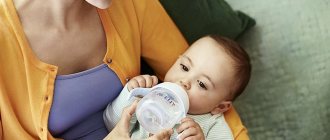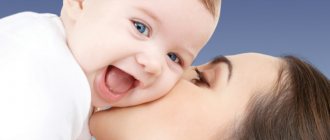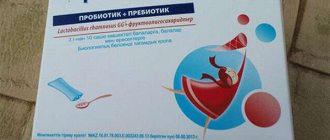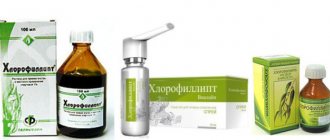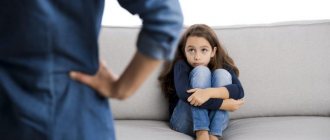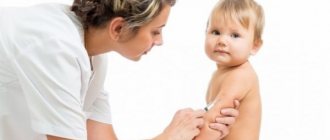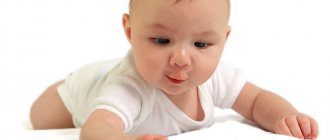What should not be done for acute diarrhea?
Acute diarrhea refers to frequent diarrhea with a greenish tint and traces of blood, combined with vomiting, high fever and severe abdominal pain. In this case, it is strictly forbidden to do the following:
- Give your child antibiotics and other medications for diarrhea.
- Massage your stomach and apply a warm heating pad to it.
- Give your baby any painkillers.
- Forcing a child to eat food if he or she has no appetite.
In case of acute diarrhea, it is recommended to immediately call an ambulance. And before the specialists arrive, give the baby boiled water (in small portions).
Treatment of childhood diarrhea
First of all, it is necessary to replenish the loss of fluid in the body. To do this you need to do the following:
- Dissolve a teaspoon of salt and 6 tablespoons of sugar in a liter of boiled water and feed the child with this solution (in small portions). For the same purpose, you can purchase ready-made pharmaceutical products, for example, Disol or Regidron.
- To cleanse the intestines, give the baby adsorbents (Phosphalugel, White clay - 1 tsp per glass of water, activated carbon - 0.05 g per kilogram of body weight, activated carbon tablets must first be diluted in 100 ml of boiled water and taken 3 times a day ).
But the safest remedy for diarrhea is Smecta.
Fats
About 50 grams is the daily fat intake for 3-year-old children.
Fats are one of the main sources of energy in the body and play a large role in metabolism, dissolving fat-soluble vitamins A, E and D. In addition, fats are involved in the transport of nutrients. Therefore, a lack of fat can lead to slow growth, poor immunity, and poor physical activity.
But not all fats are healthy. Preference should be given to vegetable and animal fats containing polyunsaturated fatty acids omega 3, 6 and 9, found in fish, nuts, flaxseed, olive, sesame and almond oils.
You can also use the following vegetable oils:
- sunflower (unrefined);
- corn;
- olive;
- soy.
Even if you don’t like the taste of, for example, olive or flaxseed oil, this is not a reason not to give it to your child.
Vika, mother of 3-year-old Egor: “I added flaxseed oil to Egor’s porridge from the beginning of introducing complementary foods. I started with a drop, now it’s a teaspoon per serving. Egor eats with pleasure, because... I'm used to it, but just the smell makes me sick. But I know that it is healthier than, for example, creamy.”
A certain proportion of fat comes with milk, meat, cheese, cottage cheese and other products. A drop of vegetable oil can be added to salad, porridge or pasta.
Do you need emergency help?
Emergency medical care is necessary in cases where, in addition to diarrhea, other alarming symptoms are present, for example:
- Increased body temperature.
- Sharp cutting pain in the abdomen that lasts 1-2 hours or more.
- Nausea and vomiting.
- The presence of traces of blood in the stool and the presence of a foul odor.
- Headache.
- Going to the toilet more than 5-6 times a day.
- Dizziness and general weakness.
If, apart from diarrhea, there are no additional symptoms and in general the child feels fine, you can do without emergency help.
Nutrition after diarrhea
During the recovery period, the baby must eat a special diet for 7-10 days. So, when creating a menu, you must be guided by the following rules:
- Feed the child several times a day, but in small portions (preferably at the same time, without skipping).
- In the first days after illness, the diet must include porridge with water (mainly whole grains), for example, oatmeal, rice and buckwheat.
- After a few days, you can add mashed potatoes and boiled vegetables chopped in a blender to your diet.
- Periodically give your child steamed meatballs, but without adding various sauces (chicken or turkey).
- Every 1.5-2 hours the baby should drink 100-200 ml of boiled water. In addition, dried fruit compotes, berry fruit drinks, mineral water, a decoction of chamomile flowers or rose hips, and weak black tea will be useful.
Prohibited foods for diarrhea include: cabbage in any form, beets, carbonated drinks, sweets, chips and crackers, legumes, mushrooms, tomatoes, milk, as well as all fried (or simply fatty) and smoked foods.
Recipes
You can prepare many dishes yourself; the baby will happily eat everything if you make the culinary process creative and fill it with love for the child.
Pumpkin soup with chicken
Ingredients: 350 grams of pumpkin, 200 g of chicken fillet, 100 g of potatoes, 60 g of carrots, 50 g of leeks, 20 g of hard cheese, 5 ml of olive oil, a clove of garlic, 0.5 liters of vegetable broth.
- Boil the chicken fillet with the spices until cooked.
- Pour some water into a saucepan with a non-stick bottom and gradually add chopped onions (leeks or onions), carrots, and pumpkin. Simmer everything until half cooked and pour in broth. You can take the remaining and strained chicken fillet or any vegetable after cooking. Cook for another 20 minutes.
- When serving, add butter, salt, grated cheese, pressed garlic (just a little), sprinkle with lemon juice.
- Offer your child this soup with croutons prepared in advance from a stale loaf.
Vegetable and meat cutlets
To prepare this healthy dish you need to take: lean meat (600 g), white cabbage (200 g), zucchini (150 g), medium carrot and onion, garlic clove, 2 eggs, salt (to taste).
- Grind all prepared ingredients (washed and chopped) in a meat grinder twice, add salt and add eggs.
- Knead the minced meat and form small cutlets, roll in flour or breading.
- Fry in vegetable oil until slightly crusty or simmer in a small amount of water.
Fish and cabbage cutlets
To please your child with this dish, stock up in advance with 50 g of fish fillet and five cauliflower florets, one yolk, half an onion and two tablespoons of pre-cooked rice.
- If you do not have boiled rice, then cook it directly while preparing the dish. You will have 7-10 minutes, during which you will need to cook the washed and sorted cabbage inflorescences.
- Fish fillet, boiled rice and cabbage will need to be mixed using a blender, adding onion and salt.
- Beat the yolk of one egg into the resulting mass and form into cutlets. A steamer is a great place to finish cooking this dish.
Apples baked with curd filling
Such a tasty and healthy dessert will appeal not only to your baby, but also to all other family members. It's very easy to prepare.
Take six non-sour apples, 150 grams of cottage cheese, 2 tablespoons of fine sugar (or powdered sugar), one egg yolk and one teaspoon each of vanilla sugar and potato starch.
- Wash the apples thoroughly, cut off the top part in the shape of a lid. Remove the middle with a knife or spoon, trying to leave thick walls of the apples.
- Turn cottage cheese, yolk, sugar, starch and vanilla sugar into a homogeneous mass using a food processor or blender.
- Stuff the apples with the curd mixture and place in the oven for 30 minutes. Before serving, cool and decorate the dish (for this you can use ready-made whipped cream or cream).
"Milk-banana pleasure"
If you don’t know what to prepare for an afternoon snack for a three-year-old child, then be sure to try this dessert - nutritious and tasty.
You will need: 1 banana, a glass of milk (boiled, but not hot), 2 cookies (“Creamy”, “Yubileinoe”, etc.), 2-3 hazelnuts.
- Grind the cookie pieces and nuts in a coffee grinder. Place the peeled and chopped banana in a container, pour in the milk and beat with a blender. Add the mixture of nuts and cookies and beat again.
- Pour into a glass, garnish with a mint leaf or banana slices.
If there is bloody diarrhea
Diarrhea with blood most often indicates diseases of the internal organs or the presence of parasites. Food poisoning rarely leads to this phenomenon. So, the causes of diarrhea with blood are the following factors:
- Inflammation of the intestinal mucosa, stomach or esophagus.
- Haemorrhoids.
- Stomach ulcer.
- Cancer diseases.
- Presence of helminths in the intestines.
- Infectious diseases (rotavirus, dysentery, colitis, etc.).
- Failed abdominal surgery.
If there is blood in the stool, it is recommended to contact a medical facility as soon as possible.
Basic medications for treating diarrhea in children
The following drugs (sorbents) are indicated for the treatment of diarrhea:
Among the antibacterial agents, it is worth highlighting Furazolidone and Enterofuril.
The following drugs are recommended as probiotics for babies:
- Linux.
- Hilak forte.
- Acipol.
- Enterol.
- Bifidumbacterin and others.
Self-medication is unacceptable. You can give a child this or that drug only after the doctor’s permission.
Diarrhea in a three-year-old child can be a serious cause for concern. And you shouldn’t expect that the disease will go away on its own; the baby needs to be provided with timely assistance (provide drinking water, give a mild antidiarrheal drug) and call a doctor. During the recovery period, it is important to follow a certain diet that will help the baby quickly get back on his feet and return to the usual joys of life.
Possible causes of loose stools
The most common reason that diarrhea appears in a child at the age of 3 is a violation of the diet and organization of food intake:
- binge eating;
- failure to comply with hygiene rules (eating with unwashed hands, using dirty dishes, violation of cooking technology);
- low-quality food (products with expired expiration date);
- inclusion in the child’s diet of products from the adult menu (fatty, smoked foods with the use of spices);
- the predominance of sweets in the menu, the inclusion in the diet of a large number of dishes high in fiber (raw vegetables, fruits);
- monotonous food;
- consuming several foods that are incompatible with each other at the same time (raw vegetables or fish with milk, carbonated drinks).
Another cause of diarrhea in children is intestinal infections caused by viruses or pathogenic bacteria.
The main causes of infectious diarrhea:
- dysentery;
- salmonellosis;
- rotavirus infection.
Symptoms of diarrhea due to infections in three-year-old children are difficult to miss. They manifest themselves as acute malaise, the child suffers from frequent bowel movements, pain in the projection of the stomach and intestines, and dangerous symptoms of dehydration appear. Gastrointestinal infections should only be treated by a doctor, so the baby should receive prompt medical care in a timely manner.
In a 3-year-old child, stool may become liquid as a result of dyspepsia - impaired digestion of food, lack of small intestinal enzymes.
Other causes of diarrhea in three-year-old children:
- poisoning with chemical compounds (mercury, arsenic, drugs);
- dysbiosis resulting from taking antibiotics;
- irritation of the stomach and intestines with gastritis and ulcers;
- helminthiasis;
- side effects of medications.
In a three-year-old child, stool disorder may appear even as a result of fear and excitement (neurogenic diarrhea). Occasionally, lactase or sugar deficiency occurs, when loose stools appear due to the child’s intolerance to milk or sugar.
Protein food
Protein for 3-year-old children is needed like cement in the construction of buildings. It is he who is entrusted with such functions as the “construction” of new cells, the transport of useful substances to all organs, and the formation of immunity responsible for the health of the child.
A three-year-old child should consume a sufficient amount of meat, liver, eggs, milk and fish. These products will help saturate the child's body with proteins and the growth of muscle tissue.
Meat
Which meat to choose
Boiled meat (about 80 grams per day) can be consumed in first and second courses. Small pieces that are easy to chew can be offered to your baby in borscht, cabbage soup, soups, and stews with vegetables. Dishes in which meat is presented in the form of minced meat (stuffed cabbage rolls, meatballs, steamed cutlets, meatballs) are very convenient.
The only indicator that is important when choosing meat is its fat content. You should not feed your child fatty goose or duck or pork with fatty layers. It is better to choose boiled chicken or veal.
Cooking method
Cooking method: boiling or stewing. It is very convenient to use a double boiler or multicooker - food will never burn in them. Frying or baking is contraindicated at this age.
Eggs
Amino acids, antioxidants, vitamins and minerals will pass into the child's body along with the consumption of eggs. Under no circumstances should you offer your child raw eggs, only boiled eggs or in the form of an omelet. 3 egg dishes per week is enough.
Dairy
Milk, as in infancy, continues to be one of the main sources of protein entering the child’s body. A healthy child of three years old can drink about half a liter of milk per day. Don’t forget about pre-boiling or pasteurizing this product, beloved by kids.
Fermented milk dishes should also occupy a worthy place when compiling a child’s menu at 3 years old: cottage cheese, yoghurts, kefir and others. When choosing these foods, you don't have to choose the fattiest foods. You can gradually include not too salty and spicy varieties of cheese into your diet.
Fish
Fish should become a familiar product for a three-year-old child, because it contains healthy omega-3 fatty acids, which directly affect the development of the baby’s nervous system, the formation and improvement of his speech and mental activity.
The health of the musculoskeletal system depends on vitamin D, which helps in the absorption of calcium and phosphorus, which are so rich in fish dishes. Boiled, baked or stewed fish should be included in the menu of a child aged 3 years twice a week.
Dangerous symptoms
A characteristic sign that a child has diarrhea is frequent, watery or pasty stools of varying frequency. If childhood diarrhea is caused by dysentery, there will be blood in the stool. In other pathologies, feces contain mucus and particles of undigested food. The baby feels spasmodic pain in the abdomen, and rumbling can be heard.
In cases where the cause of loose stool is a stomach disease, heartburn, belching appears, and appetite decreases. Diarrhea in a three-year-old child can occur without fever, which indicates that the cause of its occurrence is not related to an intestinal infection.
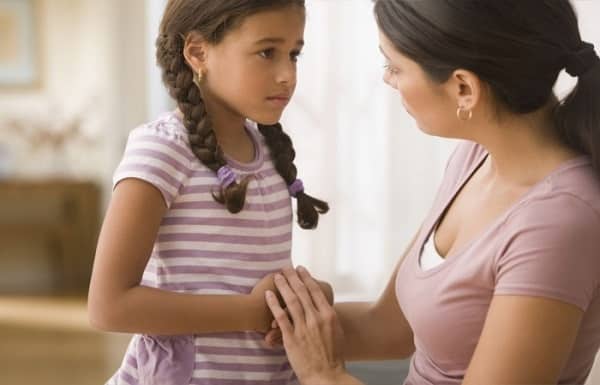
Dehydration caused by loss of large amounts of fluid is especially dangerous. If the child is 3 years old, this condition can cause coma and even death. It occurs due to excessive loss of fluid by the child’s body and is characterized by metabolic disorders.
Symptoms of dehydration:
- strong thirst;
- apathy and lethargy;
- dry lips and mouth;
- rare urination;
- rapid breathing and heartbeat;
- lack of tears when crying.
In addition to signs of dehydration, there are manifestations of the disease when treatment of diarrhea in children 3 years old is possible only in a hospital setting.
Dangerous signs accompanying diarrhea:
- vomit;
- drowsiness;
- hyperthermia with a temperature above 38-39 °C;
- general deterioration of health;
- complaints of headache;
- cyanosis of the nasolabial triangle;
- admixture of blood and a large amount of mucus in the stool.
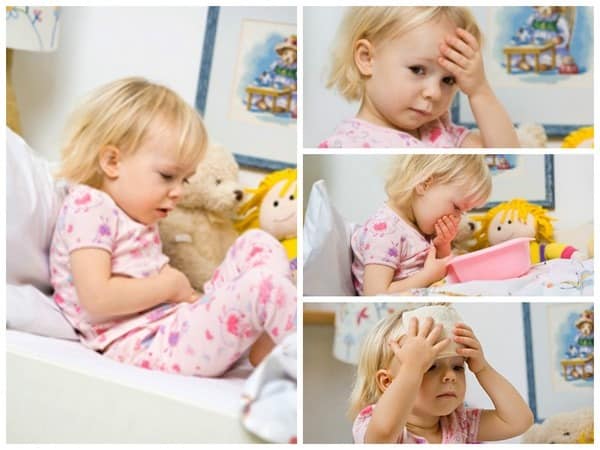
If at least one of these symptoms appears, treatment of diarrhea in children 3 years of age should be started immediately under the guidance of a pediatrician, if necessary, consulting a pediatric gastroenterologist, infectious disease specialist, or surgeon.
Digestive problems occur in every person, regardless of age. But, most often, children of the younger age category are at risk. According to statistics, in terms of incidence, diarrhea in a 3-year-old child is at the second level. The ability to correctly identify the causes of bowel problems and provide primary care for diarrhea is an important task for every parent.
Carbohydrates
It is impossible to imagine the nutrition of a 3-year-old child without carbohydrate foods (cereals, pasta, bakery products). Young children, with their unusually high mobility, need energy supplements like no other - foods with large amounts of carbohydrates.
Porridge
Porridge is the basis of food for children; they can be prepared from various cereals, on different bases - milk, water, vegetable or fruit broth. Children eat with great pleasure various cereals, which are easily absorbed by the child’s body without causing any discomfort in the digestive tract.
Flour products
At this age, the diet is updated with some flour products - dumplings, pancakes, pancakes. It is better to choose pasta from durum wheat.
Sweets
Sweets, beloved by all children, are easily digestible fast carbohydrates; they are allowed in small quantities at this age. They are best included in the menu during breakfast.
Too much sweets should not be in the diet of children - they are addictive, drowsy, reduce activity and can lead to the development of serious diseases such as diabetes, obesity or eczema.
Features of the digestive tract in children by 3 years of age
By the age of 3, the baby’s digestive system is underdeveloped. The volume of the stomach at birth in newborns is only 7 ml; by the age of three it increases to 400–500 ml. The gastrointestinal tract has a vulnerable mucous membrane. Elastic and muscle tissues are poorly developed. And also, in children under 3 years of age, the secretory function is underdeveloped (a small amount of gastric juice with a low content of enzymes is secreted).
Such features of the digestive tract complicate the process of assimilation of certain foods, especially if it is not suitable for the child’s age. As a result, the protective function of the gastrointestinal tract is weakened, which leads to frequent diseases.
Nutrition for a 1 year old child
Nutrition of a 1-year-old child is not only the process of eating food, but also the process of education. At this age, it is already necessary to teach children to eat on their own. The child can eat with everyone at the table, or buy him a small chair and table. Let him learn to be independent, carefully correct him if he is sitting incorrectly, hold the spoon and cup. Over time, he will learn to eat on his own. This applies mostly to those who are bottle-fed, and those who are breast-fed may not know how to hold a spoon for a long time. Of course, you won’t be able to reach great heights right away, but if you have patience and set a goal, you will succeed. The diet should be varied, using acceptable foods for this age.
In order to increase appetite, all dishes must be attractive and of high quality. For little ones this plays a big role. Nutrition at this age is almost like that of adults, so you need to give up the pacifier. The sooner you do this, the better; the pacifier can distort your teeth.
Diet for a 1 year old child
During the first year, the child gets used to new foods and adapts to a different feeding regimen. As a rule, those who are breastfed from birth remain on it for almost 1 year. This has a good effect on the health of mother and child. For the mother, this is the prevention of breast cancer and reducing weight gain during pregnancy, and for the child, this is nutritious nutrition during the period of growth and the receipt of ready-made antibodies, enzymes, and immunoglobulins.
Other foods begin to be introduced into a child’s diet at 1 year of age from 3 months, especially for those who have been bottle-fed since birth or for those who switch to bottle-feeding. Complementary feeding is introduced in accordance with individual characteristics, the main thing is not to introduce complementary feeding during illness and during the hot season. Try to maintain breastfeeding for as long as possible. It is better if, after each feeding with other dishes, the baby drinks breast milk. If you are unable to preserve breast milk, use adapted milk formulas. You cannot use goat's or cow's milk due to the risk of allergic reactions.
Common causes of diarrhea in children at this age
It's no secret that children of the younger age group have a habit of putting any objects in their mouths. It is in this way that the vast majority of microbes and viruses penetrate the baby’s body. The main prerequisite for stool disorder in childhood is poor personal hygiene. Children become infected with germs through unwashed hands, vegetables, fruits and, as a result, stomach problems and watery stools. Normally, a baby’s bowel movements should have a porridge-like consistency and no more than 1–4 times a day. Frequent and liquid, more than 5 times a day, should alert parents. The reasons that caused problems with stool in a three-year-old child are infectious and non-infectious in nature.
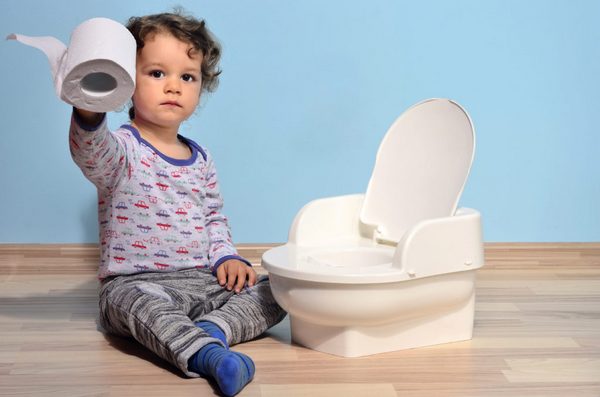
In addition to lack of personal hygiene, diarrhea in a 3-year-old child is provoked by improper organization of food intake, for example:
- Binge eating.
- Spoiled, expired products.
- Consumption of foods that are not appropriate for the baby’s age (smoked, fried, hot spices).
- The daily diet contains a lot of food with coarse fiber.
- Excessive consumption of sweets and carbonated drinks.
- Consumption of foods that do not combine with each other (milk and fish).
- Daily monotonous menu.
- Intolerance to certain foods or their components (milk, sugar).
- Stress, strong excitement, worries.
- Dyspepsia (digestion problems).
It is possible to say that diarrhea is not caused by infection if diarrhea in a 3-year-old child goes away without fever. In addition to the above, there are other prerequisites for problems with stool in babies:
- intoxication with chemical fumes;
- ulcer;
- side effect after taking medications, antibiotics;
- gastritis;
- helminthiasis
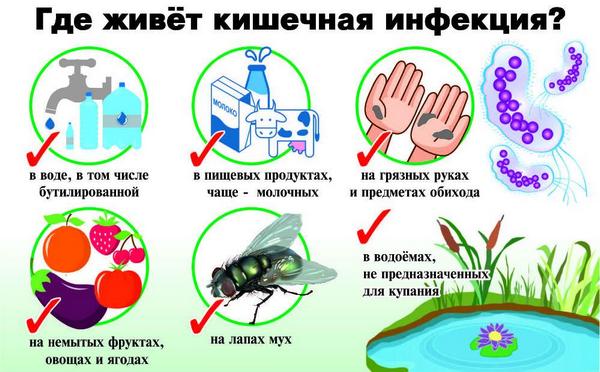
Frequent bowel movements in younger children are caused by an intestinal infection due to ingested viruses and pathogenic bacteria. In childhood, among the main causes of this disease, the following, the most common, are noted:
- Dysentery. The disease makes itself felt within 3–5 days from the moment of infection. Problems such as abdominal pain, diarrhea, headaches, and fever are observed. The frequency of stool per day exceeds more than 10 times.
- Salmonellosis. The most common type among intestinal infections. Main symptoms: loose stools, vomiting, rapid dehydration. In the absence of timely treatment, death is possible.
- Rotavirus infection. It is common among children under 3 years of age; adults are less susceptible to the disease. During the illness the following symptoms are observed: diarrhea, fever, vomiting. The treatment process must take place in a hospital setting, under the supervision of a specialist.
With an intestinal infection, dangerous signs may be observed, such as bowel movements more than 5 times a day with a watery consistency; with dysentery, there are drops of blood in the stool and mucus, undigested food, and paroxysmal abdominal pain. The main task of parents is to provide timely medical assistance. Treatment of loose stool in a child aged three years due to infection requires a special approach and careful diagnosis.
What symptoms are observed with an intestinal infection? The main symptoms of diarrhea are: frequent and loose stools, pain in the stomach, fever and general weakness.
What can you feed a child at 3 years old?
Many parents mistakenly believe that from the age of 3, it is time for a child to eat all the dishes from the adult table. But digestion at this age is not yet sufficiently developed and it is necessary to continue to be attentive to nutrition. It should remain balanced and useful.
There is no need to wipe the food so as not to lead to an incorrect bite. Food should be in pieces, forcing the chewing muscles to work and strengthen. But the food should not be hard; the child will not be able to chew it well or will completely refuse such food.
- Liver
. Continue giving your baby liver dishes. It can be stewed with vegetables or made into a pate. Children willingly eat liver pates with bread. - Meat and fish
. Variety of meat and fish dishes. Now you can fry, and not just steam. Sausages are still limited. It is advisable not to give salted fish yet. - Cottage cheese
can be prepared in the form of cheesecakes or lazy dumplings. Children like it better this way, but raw cottage cheese is preferable. It’s good to add raisins or chopped dried apricots to it. - Milk
and kefir should not be excluded from the children's diet. Although the daily milk intake is already much lower than in the early years. - Vegetables and fruits
. Vegetables still make up the majority of the diet. Especially in its raw form, this is how all vitamins and minerals are preserved. In addition, the child is already able to chew them well. Stewed and baked vegetables and fruits must be present on the children's table. And vegetable broths can be used as a base for sauces.
Fats in baby food are also important; they help the absorption of certain vitamins. But not all fats are created equal. You should not give your child food fried in large amounts of oil, as well as margarine and products containing it.
More and more mothers are deciding on the timing of breastfeeding in favor of prolongation. However, is this decision in favor of the baby? We asked mothers what motivates them to breastfeed their child after 1.5 years, and asked a pediatrician for comments.
Anna, 38 years old, breastfed until she was 3 years old
“The decision to breastfeed was made during pregnancy. Unfortunately, the eldest daughter was an artificial child. For me, there was no question of how long I would feed my second child, I just decided for myself that the healthiest thing for his health was mother’s milk. Therefore, I decided, I will stop feeding when my daughter refuses to breastfeed herself. A big misconception among many parents is that weaning is painful for mother and baby. It’s just that the time has not come for the child to lose this connection, but the mother’s body feels this and also resists. Hence the problems with the breasts. Everything came naturally to us. One day my daughter said that “there are no macaques,” and they stopped there. She didn't ask for the breast anymore and I didn't even have to do anything. So in one evening our bodies put an end to it. There were many advantages. Yes, at least the fact that during illnesses we did not take medications at all, but only made do with breast milk. At the same time, she briefly refused all other food. And what about the statement of doctors that after a year breast milk does not contain anything useful for the child? It seems to me that all this was invented either by stupid and lazy people, or by mixture manufacturers. And our bite is fine. And my daughter is very independent.”
Olga, 31 years old, breastfed until she was 2 years old
“From my observations, I can say that mothers quit breastfeeding within a year, or even much earlier, due to their own reluctance, fatigue, or under pressure from “advisers.” We are doing well with our bite. The value of breast milk after one year is not in vitamins, but in immunoglobulins. A strong connection between mother and child promotes self-confidence, and therefore, individual independence in the future. It's my opinion".
Maria, 26 years old, breastfed until she was 2 years old
“It’s sad to see that children are becoming a means of profit: from the screens, impressionable mothers receive a stream of information with idealized images of happy children who have a whole bunch of newfangled gadgets in their mouths: bottles, tubes, pacifiers, etc. Feeding formulas are perceived as natural nutrition for babies. Young parents feed their children while running, “fly” style. Is this why we give birth to children? Take a closer look at your baby. He needs you! In your attention, care and love. His entire future life will be based on what you give him in the first years of his life. No one but you will give him what his own mother can give her child: a mother’s milk consists of components that her baby needs.”
Yulia, 27 years old, breastfeeding, child is 3 years old
“My daughter will be three in two weeks, and I still breastfeed her. But feeding is only at lunchtime and once at night. I feed for so long because I myself think it’s important and right. If there is milk, why take it away from the child? If the child and I enjoy it, then why stop it? The excommunication will come on its own, it is already close, and it even makes me sad. Sometimes mothers who take away the most precious things from their children so early do not think about how important this is for their children. My daughter already speaks very well, in the evenings she kisses my breasts and says that this is the sweetest and favorite milk. How can I deprive her of this? No way. Never. In three years, she was sick only a couple of times, while her peers were bottle-fed several times in three months. I don’t trust anyone about the bite. Even to our pediatrician, who always grumbles and says: “Well, are you still feeding? The bite will be ruined!” I myself breastfed up to 2.8, and I have a healthy bite and straight teeth. Regarding children who are not independent, those who can’t do anything without their mother’s presence and breasts and are always there. That's also not true. My daughter stays with her husband when I have to leave for business or work, she doesn’t ask for the breast, she doesn’t remember. She just can’t sleep without me, but that’s because dad didn’t have the opportunity to fall asleep with her. I even heard that there are mothers who go to work and continue to feed, and some feed only on weekends. In general, if nature gave a woman breasts, then the mother’s purpose is to feed as long as possible, without depriving either herself or the child of this happiness. By the way, the milk supply has become much less, only in one breast; it is enough to enjoy it only once at lunchtime and at night. Everything is so interestingly thought out.”
Irina Troyanovskaya, pediatrician
In the modern world, a woman is not only a mother, but also a social person, and this simply does not allow for the “cult of breastfeeding,” because she needs to go shopping, to clinics and, after a maximum of three years, go to work. In fact, you can feed for as long as the mother wants, even before school and even at school, but is it worth it? Imagine the picture: an adult three-year-old in a store or in a park begins to tear off his mother’s T-shirt, demanding her breasts. Or there are guests in the house - and the baby, getting excited in an unfamiliar company, does not let go of his mother. Not the most pleasant moments for both parents and others. It is important for any mother to remember:
- The baby receives all the most beneficial benefits from breast milk in the first 6 months. Later, it changes its composition (this can be seen even by color and consistency) and can no longer provide the baby’s body with everything necessary, which is why the introduction of complementary foods begins at this age. If a child remains exclusively breastfed, he may experience developmental delay and malnutrition.
- With milk, the baby receives the mother's immunoglobulins and antibodies until the end of breastfeeding. Thanks to them, the child gets sick less often and recovers mostly without medications. But another problem arises: his own immune system slows down his development, and his mother’s body does all the work for it. When the baby is left alone with the virus, a common cold can cause many serious complications.
- For the correct formation of the maxillofacial skeleton and bite, the child must receive solid food. Most children who are breastfed for a long time have a very specific bite. Perhaps, if the baby is breastfed once a day before bed, nothing bad will happen, but if mother's milk takes up most of the food received, the child may have problems in the future.
- Many breastfed children refuse other food, because in order to eat puree with a spoon or chew something, you have to put in much more effort than to get mother's milk.
- At about a year old, the child moves to a new stage of development, begins to recognize himself as an individual, and it is at this moment that breastfeeding turns into an addiction. The baby cannot fall asleep without breastfeeding; he latches on when he is upset, scared or unsure of himself. In most cases, weaning is much more difficult if feeding has become an addiction.
- Most often, mothers do not stop breastfeeding for fear of losing some special connection with their children. But a person who already walks, speaks, and clearly expresses his emotions has completely different criteria for connecting with the outside world. It is much more important for a mother to help the baby develop emotionally and physically, to support him in his endeavors, to allow him to show independence in difficult situations, and not to detain him in infancy.
- With prolonged breastfeeding, the mother's body becomes exhausted and wears out. Many women notice that their skin, hair, nails are deteriorating, and note chronic fatigue.
- In families where the mother breastfeeds the child for a long time, the situation is more tense and misunderstandings between husband and wife occur more often. Women often forget that they are not only mothers, but also wives. It is unlikely that a man will be delighted when for 2-3 years a woman is exclusively a dairy farmer and sleeps with the baby.
It is impossible to say unequivocally that feeding after a year is harmful, but still the optimal age for weaning is considered to be 1-1.4 years. If you do everything correctly, introduce complementary foods on time and gradually stop breastfeeding starting from 6 months, then the complete cessation of breastfeeding will go unnoticed and painlessly for both the mother and her baby.
A child’s diet is a real headache for many parents. What should I feed my baby so that it is both nutritious and healthy at the same time? What can you eat, and what should you avoid? Feeding a child at 3 years old is a process that requires a lot of attention and great responsibility.

